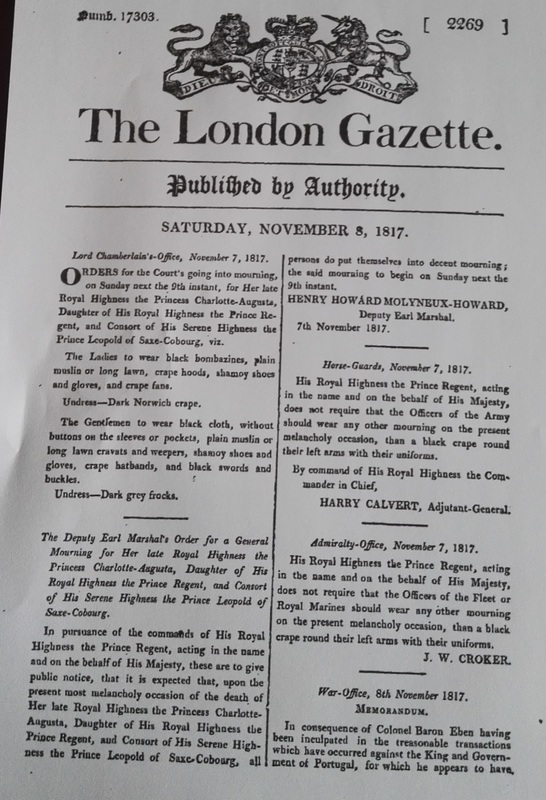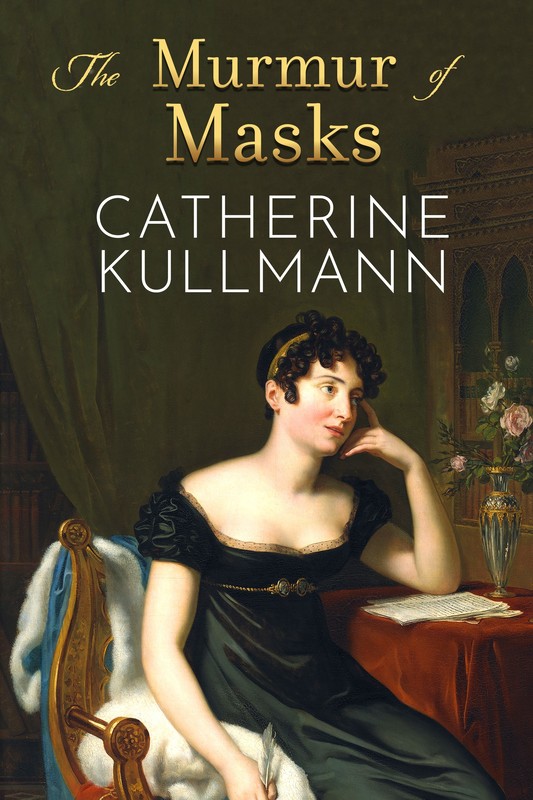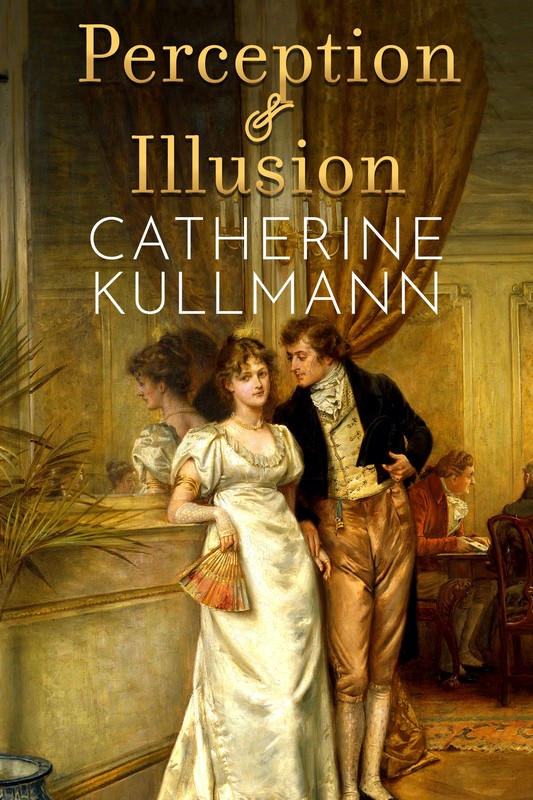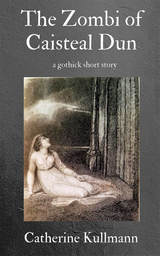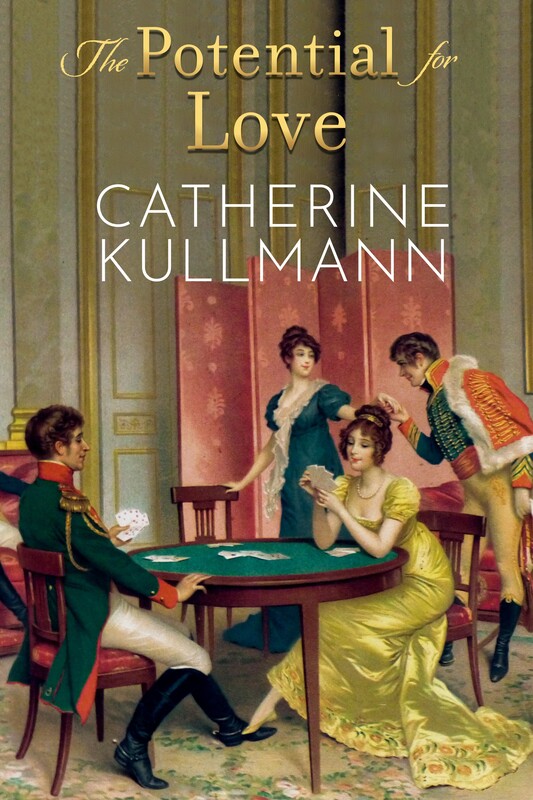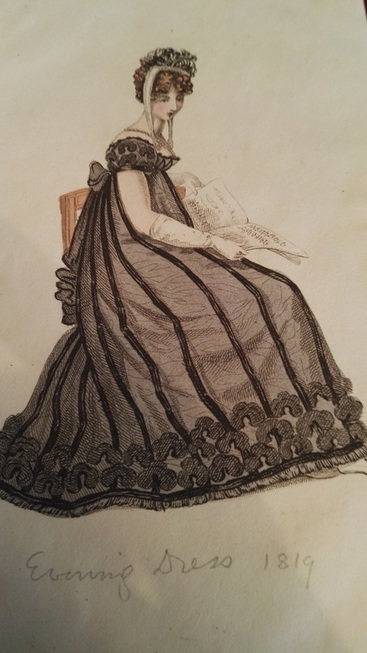
Although he did not in fact die until 1820, King George III was seriously ill in May 1811 and prudent ladies evidently preferred not to wait until his death was announced before making arrangements for the ‘decent mourning’ that would be ‘expected’ of ‘all persons’.
In Regency England the wearing of mourning for a deceased member of the royal family was a social obligation that extended to all levels of society. While Mrs Austen would have managed with a new 'Bombasin' in addition to her usual reserve of mourning clothes, ladies and gentlemen attending court had to follow the strict rules proclaimed by the Lord Chamberlain, as shown in the announcement above regarding court mourning for Princess Charlotte of Wales. In the first stage of deep mourning, everything was deep and dull black; fabrics with a sheen such as silk were forbidden, gloves and even shoes were to be made of 'shamoy' or chamois leather, a dull, porous leather akin to suede. In addition, gentlemen were forbidden buttons on their sleeves or pockets and must wear crape hatbands and black swords and buckles.
Following the prescribed period of strict court mourning - eight weeks in the case of Princess Charlotte - mourning was lightened to permit the ladies to wear ‘black silk, fringed or plain linen, white gloves, black and white shoes, fans and tippets, white necklaces and ear-rings. Undress – White or grey lustrings, tabbies or damasks’ while the gentlemen were permitted ‘Grey frocks’ [frock-coats] on ‘Undress’ or less formal occasions.
Two weeks later, on 18 January 1818, mourning was lightened for the second time. Ladies could now wear 'black silk or velvet, coloured ribbons, fans and tippets or plain white, or white and gold, or white and silver stuffs, with black ribbons' and Gentlemen 'black coats and black or plain white, or white and gold, or white and silver stuff waistcoats, full trimmed, coloured swords and buckles'. The court went out of mourning on Sunday 1 February, twelve weeks after the death of the princess.
Away from the court, the rules were not so strictly observed. In the February-published March 1820 issue of The Ladies Monthly Museum, it is remarked that, ‘the mourning [for the King, who died on 29 January] is deep and very general among all classes, but even the most distinguished fashionables [i.e. the ton] do not confine themselves to the materials mentioned in the Lord Chamberlain’s orders; plain and figured black silk and velvet being much in request for out-door dress and various descriptions of black silk and tabbinet being as much worn as Bombasin in home costume.’
The fashion plates in the ladies’ journals took account of court mourning periods, featuring mourning costumes in the relevant months. This evening dress is from the February 1819 issue of La Belle Assemblée when the court was in the final stage of mourning for Queen Charlotte, wife of King George III.
Military Mourning
During the mourning period for Princess Charlotte, officers of the army, navy and royal marines were required to ‘wear a black crape round their left arms with their uniforms’. However military mourning for her grandparents the Queen (November 1818 to February 1819) and the King (1820) required officers on duty to wear ‘black gloves, black crape over the ornamental part of the cop or hat, the sword knot, and on the left arm; the sash covered with black crape; black gorget riband, and a black crape scarf over the right shoulder.’ These regulations also applied when officers appeared at Court in their uniforms, when they should also wear ‘black waistcoat, breeches, stockings and buckles’.
It was also decreed that ‘the drums are to be covered with black, and black crape is to be hung from the pike of the colour-staff of the Infantry, and from the standard-staff of the Cavalry’. Similar regulations applied to the royal marines.
Such intense mourning inevitably had other, unwanted effects. The European Magazine and London Review reported that ‘from a most considerate regard to its repressive influence on trade in general’ the Prince Regent had announced that while the royal family would ‘continue their mourning for her late Majesty for the space of six months, it was not expected or desired that other persons should appear in mourning, except at Court, after the expiration of six weeks from the day of her late Majesty’s demise’.
Thank you for your interest in my blog. If you would like to be informed of future blogs, please 'like' my Facebook page fb.me/catherinekullmannauthor
